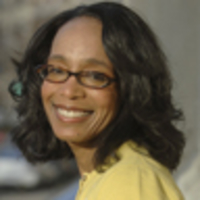A nervous new designer, sweaty in his white T-shirt and looking as skittish as a rabbit, debuted his spring 2012 women’s ready-to-wear collection Saturday night at the Lycee Henri IV during Paris Fashion Week. As often happens, this was not an auspicious debut. The collection lacked focus. The silhouettes were unflattering. And the whole project looked to be that of a beginner over-reaching. In short, it was dreadful.
None of this would be unusual, except that the name of this fashion upstart is Kanye West.
The hip-hop star has been teasing the fashion industry for years with his desire to launch a fashion line. Over the years, he has been a dedicated student of fashion, regularly attending the Paris collections—usually sitting in the front row, but just as happily crouching in an aisle and taking in the action with less-famous fans.
There were rumors that he wanted to enroll in the prestigious Central Saint Martins College of Art and Design, which produced the likes of John Galliano and Alexander McQueen. The message was that West was not kidding around. Folks with whom he’d consulted described him as serious and knowledgeable about fashion. Don’t underestimate him, they said. And so one didn’t know quite what to expect from him: a Lindsay Lohan debacle or a Victoria Beckham pleasant surprise.
West, not known for being shy and retiring, chose to debut in the French capital, instead of, say, New York because Paris “is the center of fashion.” And he wanted to be center stage—a decision that comes with significant risk. He showed on a day that included stunningly original collections from Junya Watanabe and Comme des Garcons, and a masterful meditation on color by Haider Ackermann.

To West’s credit, he resisted the urge to go big and loud. His show was small, just two rows of benches on either side of a narrow runway in a stark white room with an elegantly carved ceiling. He attracted top guns from Bergdorf Goodman and Barneys New York, along with editors from the major fashion publications. But he didn’t stuff his audience with famous friends. (I spotted Ciara, but she’d also been at the Jean Paul Gaultier show a few hours earlier.) His shrieking fans were kept at bay behind metal barricades. And he labeled his collection “DW by Kanye West,” seemingly a tribute to his late mother, Donda.
West’s opening look—and remember this collection is for spring—was a black leather skirt and jacket. It was soon followed by his single best decision: sexy silver python jeans paired with a delicate gray sleeveless top.
The mistakes began to mount: A black leather dress that unzipped at the waist displayed only a passing familiarity with the curves of a woman’s body. Necklines plunged so deep—to the waist, in fact—that a woman would have to keep double-sided tape handy to avoid indecency charges.
And there were fur coats, fur trims, and even a giant white fur backpack. Did I mention that this was a spring collection?
While the technical difficulties and aesthetic miscalculations were myriad, the collection’s gravest flaw was that it simply had no vision. It was a little bit of Balmain, a smidge of Balenciaga, a few vague references to Yohji Yamamoto and Rick Owens. There was even a touch of Issey Miyake mixed in for good measure. It was a chaotic stew of leftovers.
Backstage after the show, as his notably fine soundtrack still blared, West admitted that he was relieved the first collection was done and presented. And when asked to talk about his thinking—about his inspiration—there was not an ounce of the self-confident swagger that the public so often sees. “I’m so nervous,” he said, looking at a trio of reporters with their pens poised above their notebooks. “I’m so scared. I’m so distracted.”
“Turn down the music,” he implored to no one in particular.
With the bass still pounding quite loudly, he went on, trying to explain himself: “I’ve had a lot of ideas, color palettes, a certain type of attitude I wanted to express.”
The seed for this collection was planted five or six years ago, West said, when he met the designer Kim Jones. West had been trying to do a streetwear line but Jones introduced him to people who were “in fashion for real": people who create high-end shoes, ready-to-wear, and accessories. West said he then looked to British designer Louise Goldin for help and to Central Saint Martins professor Louise Wilson for advice.
The biggest consideration, he said, was getting the audience to look past its prejudices about “the celebrity designer, the rapper designer.” “That’s the biggest hurdle,” he said.
In fact, the most significant challenge is not his notoriety, but rather his resources. With less money and access, he might have been forced to mount a thoughtful, static presentation. Knowing that he’d have to explain his work one-on-one to editors and buyers, he might have more precisely honed his vision. Working with more humble fabrics, he might have relied on creativity over flash.
Even then, the collection could have been disappointing. But it’s a lot easier to get up when you haven’t fallen quite so hard.






